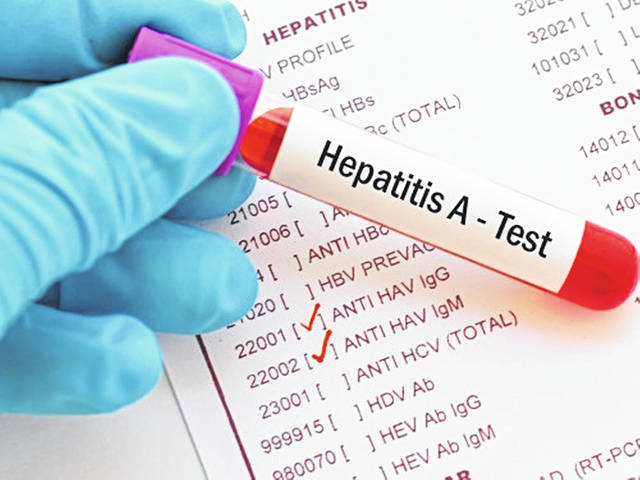
QUESTION: I just heard about a recent health warning advising people who had visited a central Ohio restaurant last month to get a hepatitis A vaccine. What is hepatitis A, and why would people who were at the restaurant need a vaccine?
ANSWER: Hepatitis A is a highly contagious virus that infects a person’s liver. It can be spread through close contact with a person who has hepatitis A or by eating food prepared by a person with hepatitis A.
The recent warning concerns consumers who patronized Fuzzy’s Taco Shop, 479 N. High St. in Columbus, Ohio, Jan. 1–16 of this year. Columbus Public Health issued the warning after a person who had direct contact with food at the restaurant was diagnosed with hepatitis A.
According to Columbus Public Health, consumers who ate at the restaurant Jan. 1–16 are encouraged to get a hepatitis A vaccine as soon as possible. The agency also said that those same consumers should watch for symptoms of hepatitis A.
Symptoms can include abdominal pain, nausea, vomiting, jaundice, fatigue, fever, a loss of appetite, joint pain, dark urine, and gray stool. These symptoms can develop from two to six weeks after the infection occurs. During that time, infected people can spread the virus to others.
There were 10,582 confirmed hepatitis A cases nationwide last year, according to the Centers for Disease Control and Prevention. That is part of an increase in reported cases in recent years, the government agency said.
Between 2015 and 2016, reported cases increased by 44.4 percent from 1,390 in 2015 to 2,007 cases in 2016. The 2016 increase was due to two hepatitis A outbreaks, each of which was linked to imported foods, CDC said. In Ohio alone, there have been at least 1,531 cases of hepatitis A last year, health officials said.
In fact, the Ohio Department of Health “has declared a statewide community outbreak of hepatitis A after observing an increase in cases linked to certain risk factors since the beginning of 2018. Outbreaks of hepatitis A are occurring in several states across the U.S., including neighboring states of Indiana, Kentucky, Michigan and West Virginia,” the agency shared in a written statement.
Handwashing is one of the most effective means of preventing the spread of hepatitis A, especially for people who are preparing or serving foods or beverages, the CDC says. This is because food and beverages can become contaminated with the hepatitis A virus when microscopic amounts of feces are transferred from an infected person’s hands.
Additionally, the virus can survive on surfaces and isn’t killed when exposed to freezing temperatures, health experts say.
Local hepatitis A cases
According to information from the Champaign Health District, there are 6 cases of hepatitis A (2 of which are outbreak-related). In addition, 2 more cases are suspected in Champaign County. Madison County has 2 cases (1 outbreak-related) and 6 suspected cases. Union County has 2 cases (1 outbreak related) and 6 suspected.
As of Feb. 4, 2019, the Ohio Department of Health reported 1,595 outbreak cases of hepatitis A across 67 counties in Ohio (76 percent of counties). Of these cases, 63 percent have been hospitalized and there have been 5 deaths.
People at increased risk for hepatitis A in this outbreak:
-People in direct contact with individuals infected with the virus
-Men who have sex with men
-People who use street drugs whether they are injected or not
-People who are incarcerated
-People experiencing homelessness
-People who have traveled to other areas of the U.S. currently experiencing outbreaks
(Information from Champaign Health District)


